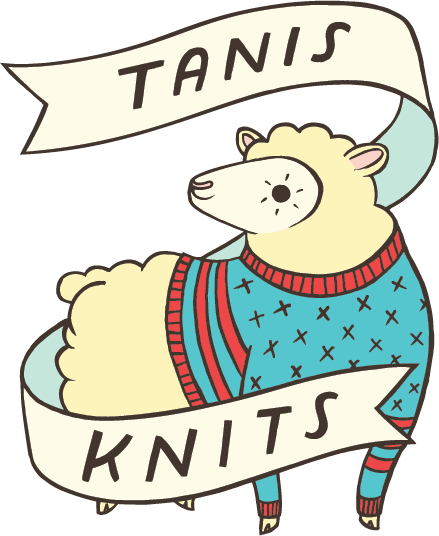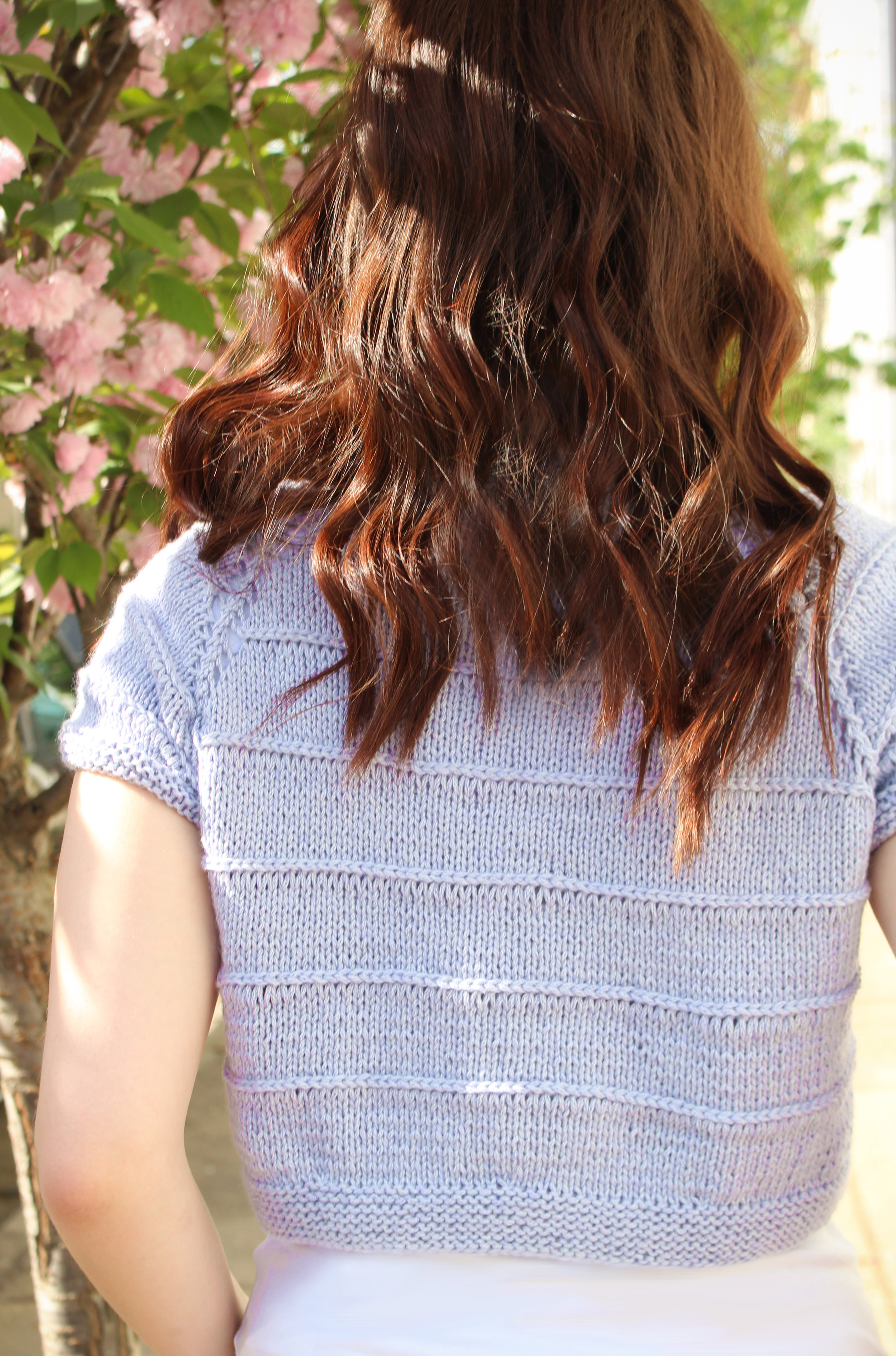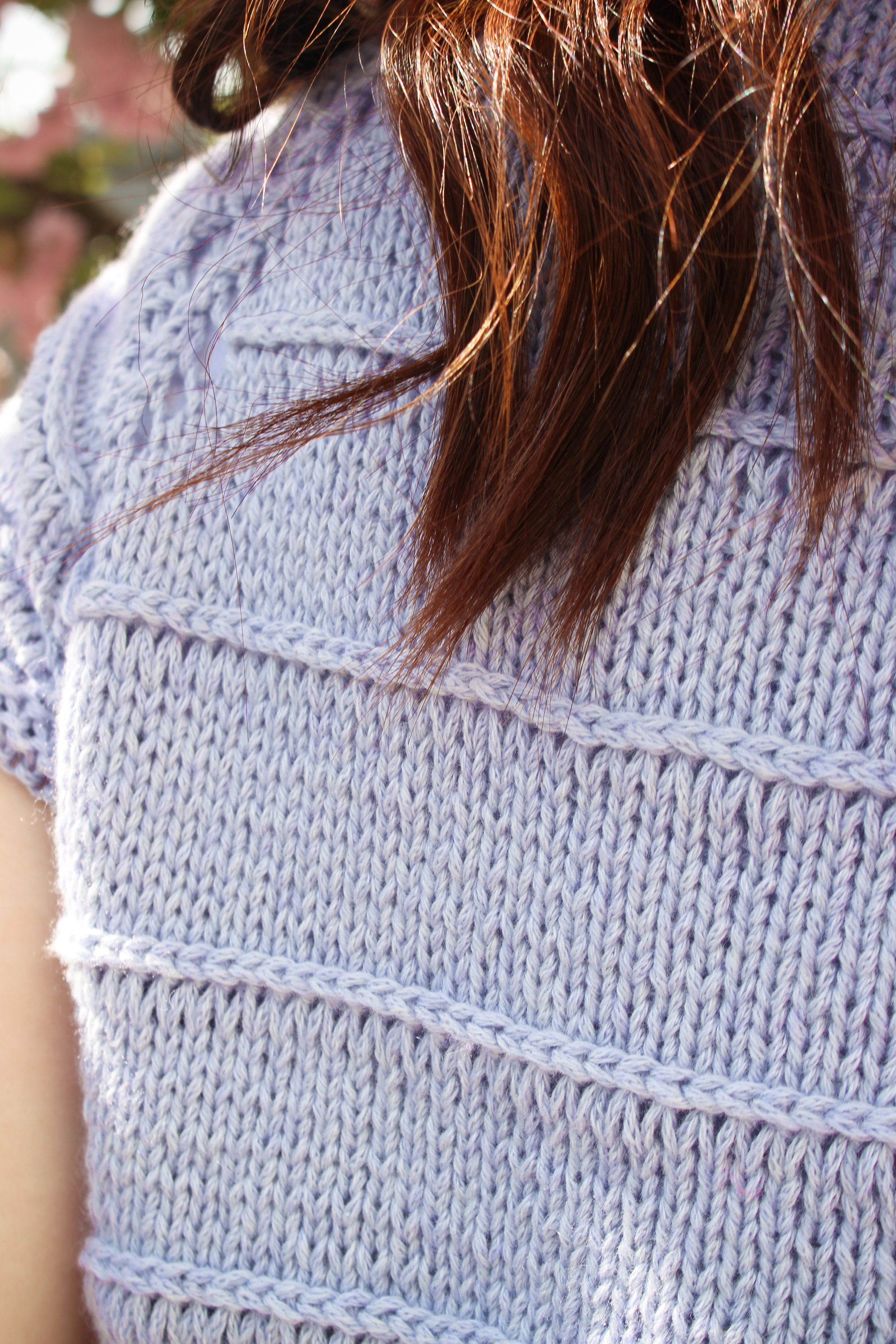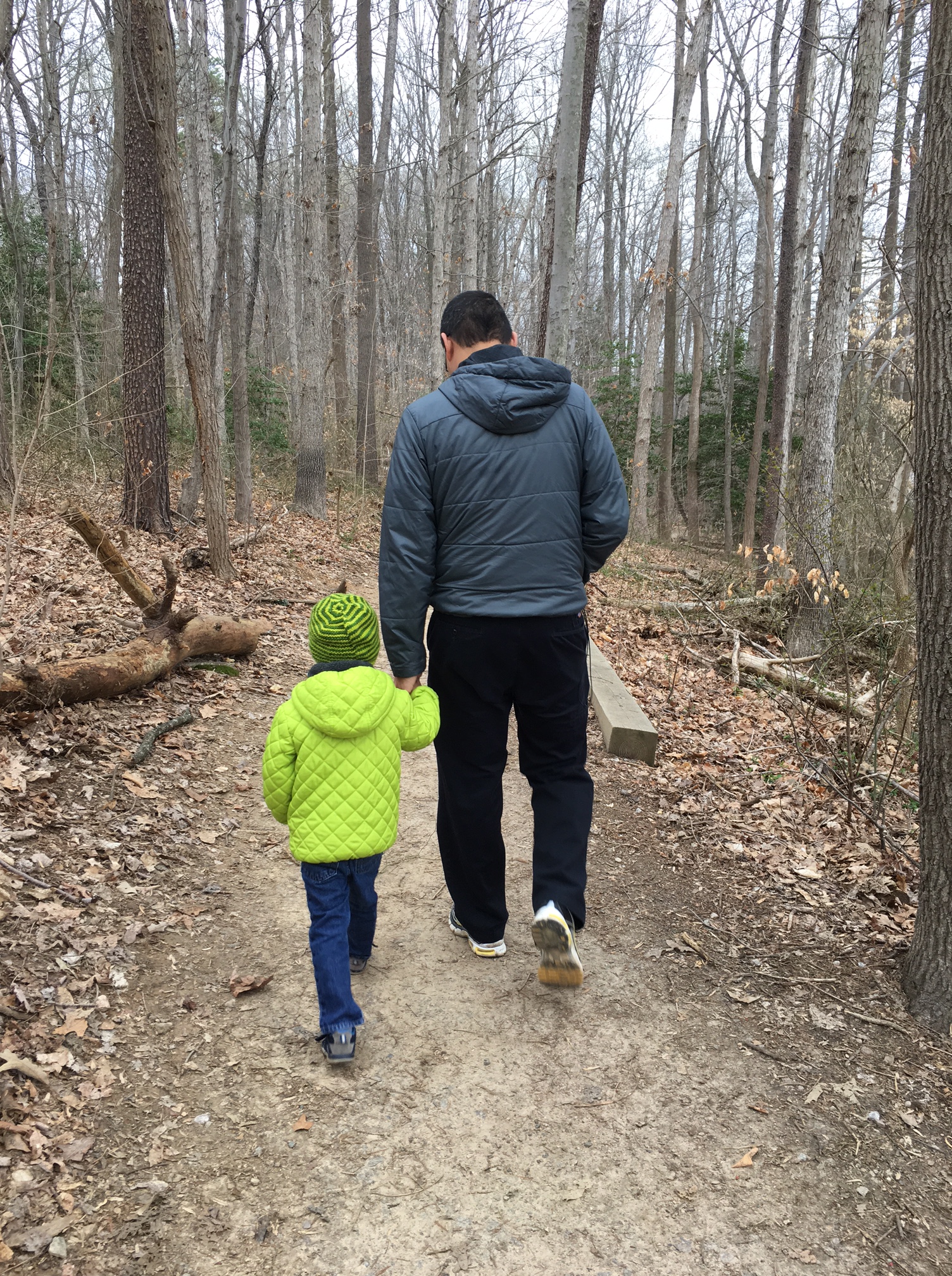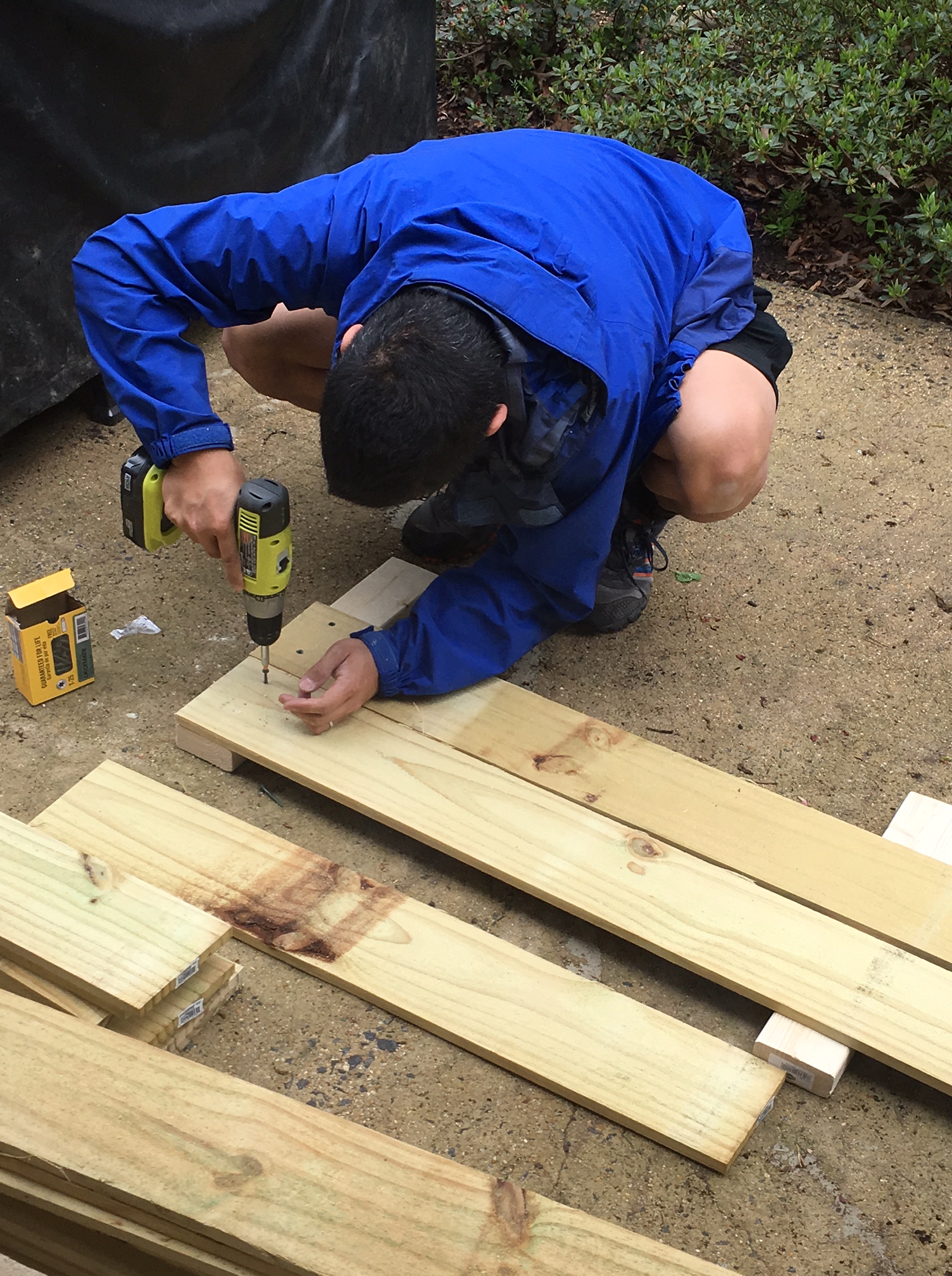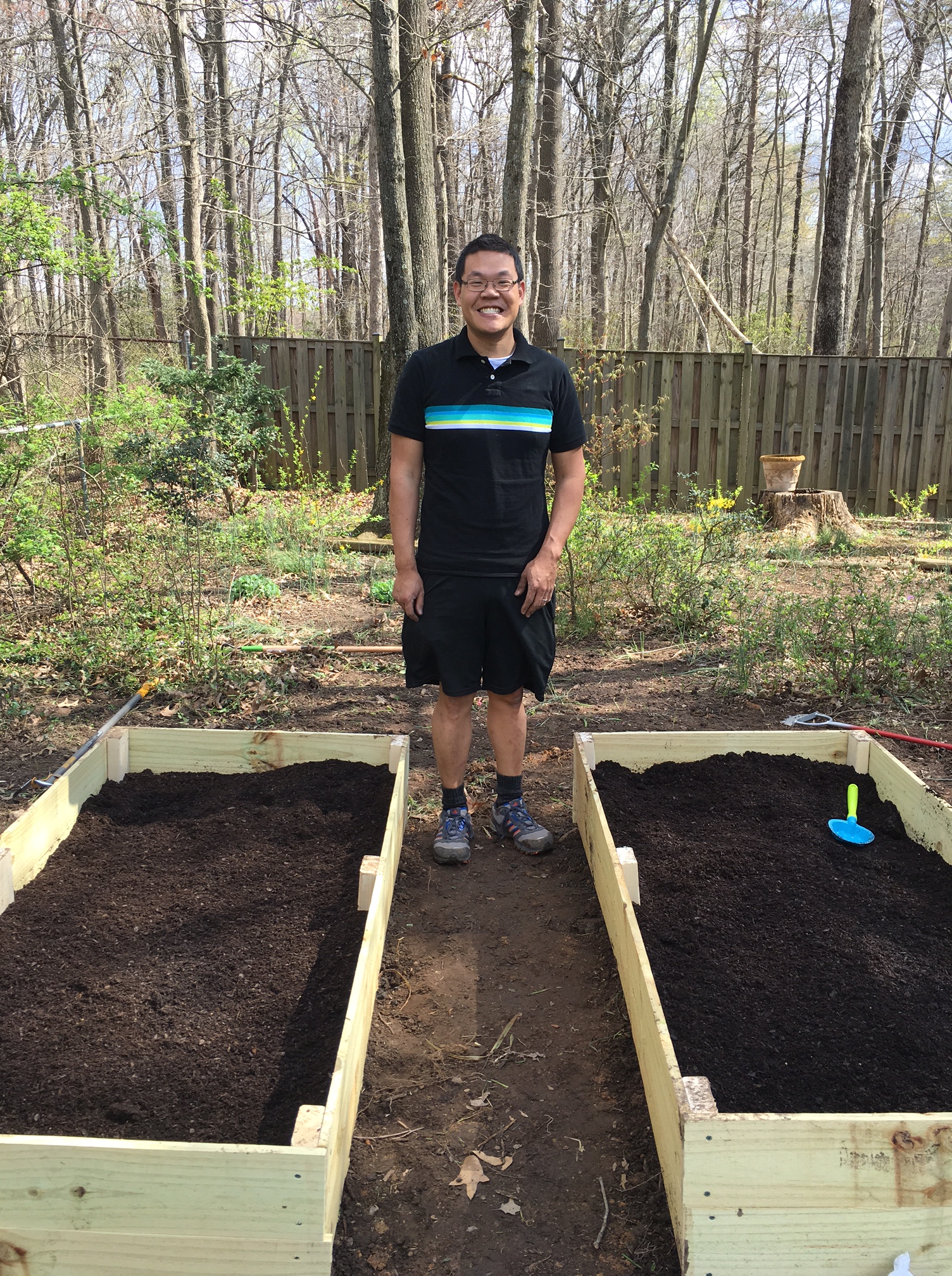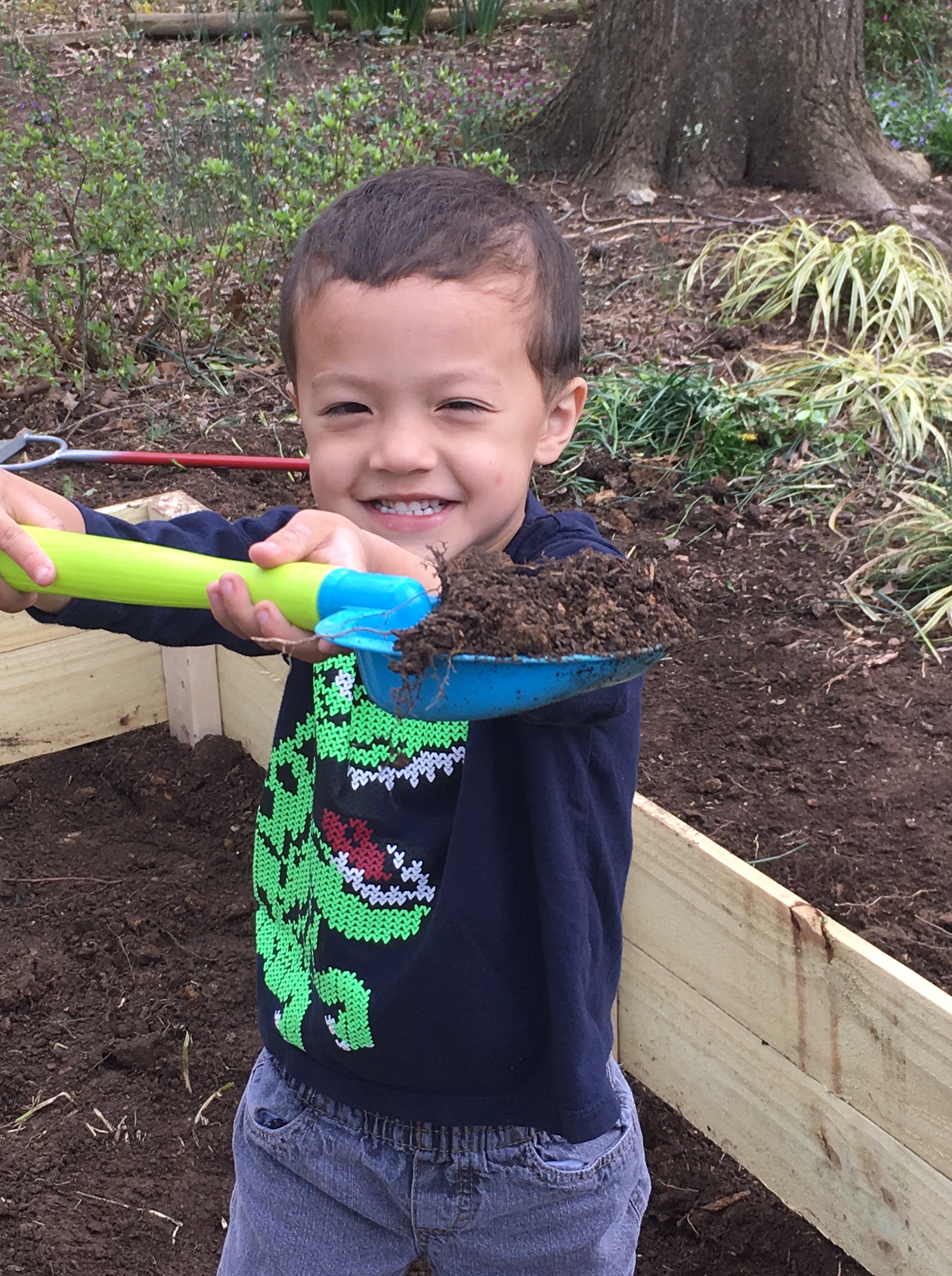When I think of springtime, I think of mornings spent opening the curtains in the living room, surveying the backyard blooms as the sun comes up through the trees that are just beginning to get their leaves, mug of peppermint tea in my hand, bare feet on the hardwood and the near-silence of a new day. I think of coming in from an afternoon spent in the garden, smelling like dirt, neck sunburned, tired in the kind of way that can only be earned by hours of hard work tugging and pulling at weeds. I think of chasing my son around the yard, pinwheels in each hand, pretending to be airplanes. I imagine our early evenings spent in the tent we pitch in the back yard that has an open roof to watch the first stars come out, talking about our day.

To me, the season of spring welcomes in an abundance of promise. New life, longer days, knitting on the porch at night, rather than bundled up in my office because it's already dark and cold after dinner. We can take an evening walk, strolling through the neighborhood looking out for plants starting to pop up and push their way into the sun. The world seems to come alive this time of year and we're all a bit like bears coming out of their caves after a long winter's nap. We stretch, yawn, grab our knitting and head out into the world.
I find that my knitting changes this time of year. I reach for the lighter blends, head more in the direction of short cardigans or boleros, lace shawls and baby blankets. I beeline to the part of my LYS that boasts plant fibers with their easy drape and lighter weight. I explore new fibers and lighter colors - my brain and knitting thinking "spring" the whole time.
Spring is still a fickle friend. Layers are essential as the day goes from chilly to warm to downright hot here in Virginia. With that in mind, I'm excited to announce the fourth installment in our yearlong KAL (knit-a-long) with String Yarns in New York City. I've talked about the wonderful feeling of camaraderie in a past post here while doing these KALs, of meeting and making friends across the globe as we all stitch together, working on the same project. But what I enjoy the most is seeing knitters go from being complete beginners or have scant knowledge of a particular technique or two, to finishing their project with confidence, having a completed garment to wear with pride and the ability to understand the mechanics of how and why we're doing something specific in the pattern. It's one thing to know how to do something, but to understand why is of equal importance.
I'm thrilled to share with you our next project, the Breeze Bolero! Knit in a classic top-down raglan style, this is an ideal first or second sweater project. The benefits to knitting a top-down garment are numerous, but my favorites are that we can try it on as we go, there is practically no finishing, no seaming and it's easy to make adjustments if you wish. If you knit a sweater in pieces, you do so with a constant thought of "I hope this all comes together in the end." If you work a sweater from the bottom up, you can't go back and easily tweak the length of it later. Top-down is my favorite sweater construction method and I hope you'll join me!
This KAL is chock full of techniques for us to explore together. Not only will we cover top-down construction, but we'll turn our raglan increases into cable twists, make buttonholes, discuss the best way to attach buttons, read a schematic, and my favorite thing of all in this project, create Vikkle Braids. Vikkles are horizontal braids running across a row, not only creating more visual interest, but adding more structure to a garment.
Each project for our yearlong KAL has an immense amount of thought put into it to teach you multiple techniques that you'll come across again and again. I know this will be the best KAL chapter yet and I'm excited to get started on Tuesday, May 10.
How do our KALs work? Each Tuesday for a month starting on May 10, I'll post in the String Yarns Ravelry Group here. This creates an open forum for all wanting to join to jump in with comments, suggestions, tips and encouragement. I'll be leading the group and checking in daily, but it's the group participation, the sharing of photos and progress that makes a KAL so much more fun than knitting on your own. Have a question? Speak up on the group page! After a month, the weekly posts cease, but I'll continue to check in for another month until the start of the next KAL. The threads remain open so if you find yourself starting later or getting a bit behind, no worries! Just like they say on Friends, I'll be there for you.
The Breeze Bolero is knit using String Yarn's Breeze, a cashmere, silk, cotton blend fiber, perfect for spring and summer. This lightweight DK blend has wonderful drape and a dozen lovely colors to choose from. Use the code MayKAL16 to get 15% off on the kit here exclusively for our KAL! The pattern is written in 6 sizes, ranging from a 30.75" bust circumference to a 50.25" bust circumference, just specify which size you'd like in the drop down menu on the kit page to ensure accurate yarn amounts. If you prefer an alternative yarn, String has options, just give them a call or pop in and they'll be happy to help!
After ordering your kit here, you'll get a 1-page pdf with the materials information, then on May 10th, the complete pattern will be emailed to you so we can all start together. Head over and join the String Yarns Ravelry Group to get up-to-the-minute KAL info and meet your fellow knitters. This is our biggest project yet for our KAL and I look forward to knitting and ushering spring in with you!
